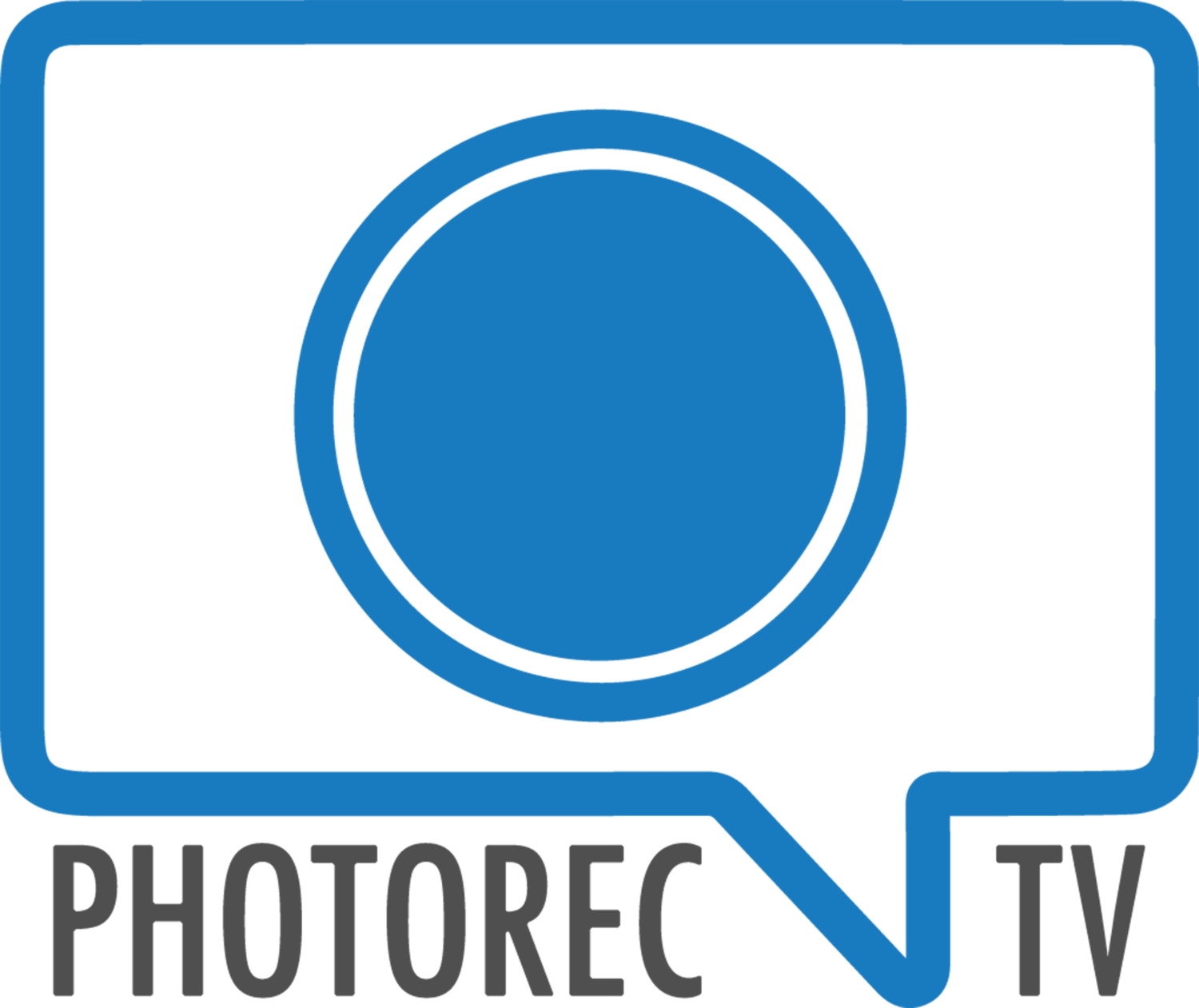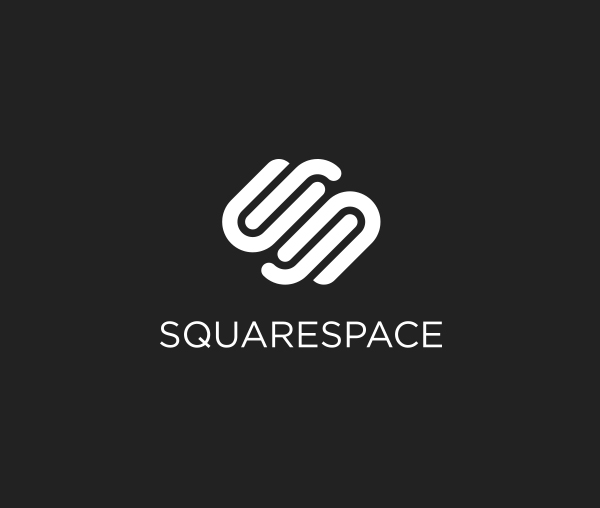After two months of using the EM-1 Mark II including a weeklong trip in subzero temps in Alaska - I share my thoughts on this top of the line Micro 4/3rds camera - How well does it do at high ISOs, how good is the stabilization and more...https://youtu.be/SdKpor-nvDs Reviews like this are made possible by Photorec.tv members - want to have a detailed conversation with me about the pros and cons of the EM1 Mark II or another camera, want to figure out what is the best camera for you? Become a member todayBuy the Olympus EM1 Mark II from B&H Photo and support Photorec.tvLenses Used in Alaska/During Em1 Mark II Review
The Olympus 12-100 f/4 Provides 6.5 stops of IS when used with the EM1 Mark II
Full Resolution Images on DropBox
[gallery columns="4" td_select_gallery_slide="slide" ids="13425,13426,13427,13428,13429,13430,13431,13432"]The Olympus e-m1 Mark II camera some reviewers have chosen it as the camera of 2016 and a few weeks ago I wondered if it was going to be my perfect do-it-all camera! For the last month, almost 2 months now, I have used the Olympus as a do-it-all camera for photos and videos including a week long trip to Alaska in sub-freezing temperatures. In this review I will share what I love about this camera, what I don’t love, how it compares to a few competitors and whether or not it can work for me and replace two cameras I typically take on my travels - my Sony A7RII mostly for photos and the Panasonic GH4 - mostly used for video, vlogging and timelapses.Strengths of the Em1 Mark IIStabilization - I can get 2 to 3 second exposures HANDHELD with this camera and in 4K video that sensor stabilization plus electronic stabilization translates to extremely smooth footage. This camera is a joy to shoot handheld video with and in all the Alaska footage I shot I saw no signs of the annoying wobble you often get from electronic stabilization. Note that THE really serious stabilization, 6.5 stops, SYNC IS as Olympus calls it is achieved with their 12-100 f/4 lens which I have not tried.Swiss Army Tool
"best tool I can compare the EM1 Mark II to is one of those ridiculous Swiss army knifes, the really thick ones"
I have mentioned In the past that these cameras are tools to me and the best tool I can compare the EM1 Mark II to is one of those ridiculous Swiss army knifes, the really thick ones, the amount of features beyond the stabilization they have packed into this camera include ridiculously fast AF, 60 frames per second RAW when you half press the shutter button, 18 frames per second with autofocus tracking and silent shooting, hi res shooting, live bulb, live timer, live composite, 4k video, and built in time lapse! All of these features makes the EM1 Mark II an extremely flexible and versatile tool. And on top of the full feature set you have the freedom to FULLY customize this camera - you can even switch the on/off button to other functions! You will find yourself spending a good bit of time in the menu if you haven’t shot with Olympus more and I did experience several camera freeze ups after customizing until I reset the camera and went a little lighter on the customization.About that AF - I struggled to really get the C-AF and tracking to nail fast moving subjects - overall focus is VERY fast but this wouldn't be my first choice if I was primarily shooting wildlife or sports. In video C-AF was very good with face recognition/focus working reliably enough to use in most situations. Certainly a step up from the GH4 which cannot always be relied on to stay focused. Rugged BodyAll of this performance and features are contained in a portable and rugged body that I didn’t worry about using in the rain or in subzero temps - in fact I left this outside for several hours in 20 below zero fahrenheit - minus the battery and it continued to perform just fine. Battery life in normal temperatures is decent - if you have two batteries you should be able to get through a day of mixed photo and video just fine and the charger is quick charge which is really helpful. The dual card slots are nice and you have an excellent amount of flexibility in how you use those two cards - backup redundancy or photos to one and video to the other though only one is high speed and that might be the cause of some buffer issues I saw that I will address in a moment.Solid Image and Video Quality Below ISO 1600
Rugged BodyAll of this performance and features are contained in a portable and rugged body that I didn’t worry about using in the rain or in subzero temps - in fact I left this outside for several hours in 20 below zero fahrenheit - minus the battery and it continued to perform just fine. Battery life in normal temperatures is decent - if you have two batteries you should be able to get through a day of mixed photo and video just fine and the charger is quick charge which is really helpful. The dual card slots are nice and you have an excellent amount of flexibility in how you use those two cards - backup redundancy or photos to one and video to the other though only one is high speed and that might be the cause of some buffer issues I saw that I will address in a moment.Solid Image and Video Quality Below ISO 1600
 I was for the most part happy with the image and video quality - Excellent quality and great detail under ISO 1600 - above that things can get rough in some situations but a little noise reduction and I am still for the most part happy. If I look at some of my favorite images of 2016 - the vast majority were under ISO 1600 - which I mostly mention as a way for you to look back over your images to decide how important clean higher ISO is to your photography. One of the goals of the Alaska trip was capturing the northern lights photography and they are best shot at shorter exposures and higher ISOs and the Olympus didn’t handle that as well as the Sony with loads more shadow noise. I got useable shots but really appreciate the flexibility of the Sony when I need clean higher ISOs. Video quality is certainly good though the panasonic GH4 4k and 1080 video looks a little better to me in most situations but of course the Gh4 is not sensor stabilized for that we are waiting for the GH5 or as many of you mentioned in the comments of the Ditching Sony video - the G85 which at 1/2 the price looks as good if not slightly better for video. For photos the G85 doesn’t offer all the bells and whistles - certainly not as good at capturing fast action but generally on par and actually offers more lenses than Olympus with the DUAL IS! So a quick summary of the strengths of the olympus. This is a great all around camera that is fun to use, provides nicely stabilized video AND gives you a ton of bells and whistles along with good image and video quality but it does have a few issues- Low light performance. Over the last year I have mostly shot with the Sony a7R2 this is a full frame sensor and one of the best in its class in both resolution and detail so it is hard for ME to NOT compare what I have been used to seeing with what I get out of the Olympus but that isn’t a fair comparison so I looked at matching it up against APS-C sized sensor like the Sony a6300, a6500 the Nikon D500 and the Fuji XT2 - all of those cameras are definitely better in low light performance but the Olympus isn’t too far behind and it even beats the Canon 80D! Now again, the EM1 Mark II offers stabilization that gives you some flexibility with shooting slower shutter speed but vs everything above you are going to generaly find your photos noisier. The most fair comparison- pitting the EM1 Mark II against other Micro 4/3rd sensors on the market - it is the current king in low light performance. However figuring out the true value here is tricky - at two thousand dollars this is not a cheap camera and is more expensive than everything I just compared it too - So you then have to start deciding exactly how much it is worth to you to go smaller and lighter. And - About being lighter - as I start to price out lenses what I mentioned is already an expensive camera well it doesn’t get any cheaper with these nice lenses AND the weight savings start to vanish- though your bag can be smaller or you could choose to go with cheaper and smaller primes which is fun - but if you want the best lenses you will still be carrying a fair amount of weight and paying top dollar.Remember I am not only reviewing this camera but trying to figure out if it can work for my needs so I can carry less and I had major concerns about the Wifi control turns out you have enough control even if you have to be round about how you setup AF for video BUT there is still one issue for me- While using the remote you cannot shoot 4K video, only 1080P - I shoot in 4K, I plan to shoot in 4k in the future so why Olympus do you give me a 4k capable camera that suddenly becomes a 1080P camera if I want to use the remote? In researching this and complaining about it online someone pointed out that the Fuji XT-2 limits you to 720P when using wifi. SO Just a thank you to Panasonic for giving a 4K camera, the GH4, that always remains a 4K camera AND you don’t have to be round about to do auto focus with the app. Another small disappointment when you shoot a crazy burst you don’t get to review any of those images until they all finish writing to the sensor which can take some time with the larger bursts. SO in final summary - I really enjoyed using this camera, if you are looking for a top of the line Micro 4/3 camera well suited for wildlife photography, general travel photography including vlogging style video - this is the best you can BUY... BUT at its current cost there are some competitors that while they might not offer all the bells and whistles or all of the portability they do either outclass it in low light performance or resolution or both. And while I would love to simplify to one camera, one lens system I am just not willing to make this big a change in resolution or low light performance, especially when my GH4 still looks better for video even if it isn’t as stabilized. I will be looking at the Panasonic G85 and while I hope to review the Fuji XT-2 soon it isn’t in the running as a replacement despite many of you recommending it - the 720p during wifi remote use, the 10 minutes limit to 4k without the power grip AND the lack of fully articulating screen means it cannot be a do it all camera for me. Buy the Olympus EM1 Mark II from B&H Photo and support Photorec.tvLenses Used in Alaska/During Em1 Mark II Review
I was for the most part happy with the image and video quality - Excellent quality and great detail under ISO 1600 - above that things can get rough in some situations but a little noise reduction and I am still for the most part happy. If I look at some of my favorite images of 2016 - the vast majority were under ISO 1600 - which I mostly mention as a way for you to look back over your images to decide how important clean higher ISO is to your photography. One of the goals of the Alaska trip was capturing the northern lights photography and they are best shot at shorter exposures and higher ISOs and the Olympus didn’t handle that as well as the Sony with loads more shadow noise. I got useable shots but really appreciate the flexibility of the Sony when I need clean higher ISOs. Video quality is certainly good though the panasonic GH4 4k and 1080 video looks a little better to me in most situations but of course the Gh4 is not sensor stabilized for that we are waiting for the GH5 or as many of you mentioned in the comments of the Ditching Sony video - the G85 which at 1/2 the price looks as good if not slightly better for video. For photos the G85 doesn’t offer all the bells and whistles - certainly not as good at capturing fast action but generally on par and actually offers more lenses than Olympus with the DUAL IS! So a quick summary of the strengths of the olympus. This is a great all around camera that is fun to use, provides nicely stabilized video AND gives you a ton of bells and whistles along with good image and video quality but it does have a few issues- Low light performance. Over the last year I have mostly shot with the Sony a7R2 this is a full frame sensor and one of the best in its class in both resolution and detail so it is hard for ME to NOT compare what I have been used to seeing with what I get out of the Olympus but that isn’t a fair comparison so I looked at matching it up against APS-C sized sensor like the Sony a6300, a6500 the Nikon D500 and the Fuji XT2 - all of those cameras are definitely better in low light performance but the Olympus isn’t too far behind and it even beats the Canon 80D! Now again, the EM1 Mark II offers stabilization that gives you some flexibility with shooting slower shutter speed but vs everything above you are going to generaly find your photos noisier. The most fair comparison- pitting the EM1 Mark II against other Micro 4/3rd sensors on the market - it is the current king in low light performance. However figuring out the true value here is tricky - at two thousand dollars this is not a cheap camera and is more expensive than everything I just compared it too - So you then have to start deciding exactly how much it is worth to you to go smaller and lighter. And - About being lighter - as I start to price out lenses what I mentioned is already an expensive camera well it doesn’t get any cheaper with these nice lenses AND the weight savings start to vanish- though your bag can be smaller or you could choose to go with cheaper and smaller primes which is fun - but if you want the best lenses you will still be carrying a fair amount of weight and paying top dollar.Remember I am not only reviewing this camera but trying to figure out if it can work for my needs so I can carry less and I had major concerns about the Wifi control turns out you have enough control even if you have to be round about how you setup AF for video BUT there is still one issue for me- While using the remote you cannot shoot 4K video, only 1080P - I shoot in 4K, I plan to shoot in 4k in the future so why Olympus do you give me a 4k capable camera that suddenly becomes a 1080P camera if I want to use the remote? In researching this and complaining about it online someone pointed out that the Fuji XT-2 limits you to 720P when using wifi. SO Just a thank you to Panasonic for giving a 4K camera, the GH4, that always remains a 4K camera AND you don’t have to be round about to do auto focus with the app. Another small disappointment when you shoot a crazy burst you don’t get to review any of those images until they all finish writing to the sensor which can take some time with the larger bursts. SO in final summary - I really enjoyed using this camera, if you are looking for a top of the line Micro 4/3 camera well suited for wildlife photography, general travel photography including vlogging style video - this is the best you can BUY... BUT at its current cost there are some competitors that while they might not offer all the bells and whistles or all of the portability they do either outclass it in low light performance or resolution or both. And while I would love to simplify to one camera, one lens system I am just not willing to make this big a change in resolution or low light performance, especially when my GH4 still looks better for video even if it isn’t as stabilized. I will be looking at the Panasonic G85 and while I hope to review the Fuji XT-2 soon it isn’t in the running as a replacement despite many of you recommending it - the 720p during wifi remote use, the 10 minutes limit to 4k without the power grip AND the lack of fully articulating screen means it cannot be a do it all camera for me. Buy the Olympus EM1 Mark II from B&H Photo and support Photorec.tvLenses Used in Alaska/During Em1 Mark II Review
Reviews like this are made possible by Photorec.tv members - want to have a detailed conversation with me about the pros and cons of the EM1 Mark II or another camera, want to figure out what is the best camera for you? Become a member today
 The Gh5 form and button placement is very similar to the GH4 - though we do have a little joystick nub - useful for menu navigation, focus point selection, the record button has moved up top and the whole camera is slightly bigger and about a 1/2 lb heavier. I am a little bummed that they went bigger heavier, I really like the size of the GH4 but it did allow them to upgrade the viewfinder -which is noticeably bigger and add dual card slots - in the years of hard use and abuse the Gh4 has seen - including shooting days worth of footage in hot Tanzania - I have never had a card or camera write error but having two slots gives you backup, or split video and stills OR just have a massive amount of storage. We also have a full HDMI port and a USB C connection, I am so glad, I hate those fiddly usb3 connections. The USB-C allows for fast image download but does NOT support charging over USB. if you want to charge on the go you need to pick up one of these - And while the Gh5 uses the same battery it does seem like battery life is marginally shorter -likely do to the slightly higher resolution LCD AND the stabilized sensor.A stabilized sensor! And like the G85 I just reviewed and the Olympus OMD em1 Mark II - when paired with certain lenses you get dual stabilization - useful for longer exposures , though so far I can’t can’t seem to hand hold reliably past a 1/2 second -
The Gh5 form and button placement is very similar to the GH4 - though we do have a little joystick nub - useful for menu navigation, focus point selection, the record button has moved up top and the whole camera is slightly bigger and about a 1/2 lb heavier. I am a little bummed that they went bigger heavier, I really like the size of the GH4 but it did allow them to upgrade the viewfinder -which is noticeably bigger and add dual card slots - in the years of hard use and abuse the Gh4 has seen - including shooting days worth of footage in hot Tanzania - I have never had a card or camera write error but having two slots gives you backup, or split video and stills OR just have a massive amount of storage. We also have a full HDMI port and a USB C connection, I am so glad, I hate those fiddly usb3 connections. The USB-C allows for fast image download but does NOT support charging over USB. if you want to charge on the go you need to pick up one of these - And while the Gh5 uses the same battery it does seem like battery life is marginally shorter -likely do to the slightly higher resolution LCD AND the stabilized sensor.A stabilized sensor! And like the G85 I just reviewed and the Olympus OMD em1 Mark II - when paired with certain lenses you get dual stabilization - useful for longer exposures , though so far I can’t can’t seem to hand hold reliably past a 1/2 second -
 with the olympus I could get 4 seconds and that was without the dual IS lens. But for video you now have silky smooth footage and can throw on small primes and still get decently smooth footage.Let’s take a look at the rest of the features4K at 60fps, nothing else close to this price offers 4k at 60FPS and full sensor use for 4k, no additional crop at 4k like you had with the GH4 - wide lenses stay wide and this provides slight low light improvements. You also have 10 bit recording internally- this means the files respond better to grading and improved slowmo with 180fps at 1080 vs just 120 fps in the Gh4. And with 60 fps at 4k you can do the kind of cinematic slow mo at 30fps and stay at 4KYou now have AUTO ISO available when shooting in Manual Video mode - something I personally appreciate.And while this isn’t a difference from the Gh4 - it's important to mention as I get asked often - there is NO recording limit on the GH4 - as long as you have space on the cards and power, the camera will continue to record. It will NOT stop at 29:59 seconds!And also important for me to mention that you can continue to record 4k even when using the very capable wifi remote - something that sets this camera apart from Olympus and fuji.It’s not just on the video side, this is a more capable stills camera - with a 20MP sensor ,improved low light handlingDOWNLOAD FULL RESOLUTION FILES FROM BOTH CAMERAS
with the olympus I could get 4 seconds and that was without the dual IS lens. But for video you now have silky smooth footage and can throw on small primes and still get decently smooth footage.Let’s take a look at the rest of the features4K at 60fps, nothing else close to this price offers 4k at 60FPS and full sensor use for 4k, no additional crop at 4k like you had with the GH4 - wide lenses stay wide and this provides slight low light improvements. You also have 10 bit recording internally- this means the files respond better to grading and improved slowmo with 180fps at 1080 vs just 120 fps in the Gh4. And with 60 fps at 4k you can do the kind of cinematic slow mo at 30fps and stay at 4KYou now have AUTO ISO available when shooting in Manual Video mode - something I personally appreciate.And while this isn’t a difference from the Gh4 - it's important to mention as I get asked often - there is NO recording limit on the GH4 - as long as you have space on the cards and power, the camera will continue to record. It will NOT stop at 29:59 seconds!And also important for me to mention that you can continue to record 4k even when using the very capable wifi remote - something that sets this camera apart from Olympus and fuji.It’s not just on the video side, this is a more capable stills camera - with a 20MP sensor ,improved low light handlingDOWNLOAD FULL RESOLUTION FILES FROM BOTH CAMERAS

 Buy the Panasonic G85
Buy the Panasonic G85 

 Buy the Canon 80D
Buy the Canon 80D
 I want to at least briefly match this up against the canon 80D priced similarly. I think the 80D is for many people a default choice when they want a video capable camera especially a high quality vlogging setup - the flip out touch screen, the lovely dual pixel AF that makes focus smooth and capable of accurate tracking. The 80D is also a very solid still camera. Let’s look at how these two compareSensor - The 80D offers a larger aps-c sensor with 24mp vs the micro 4/3rds 16MP on the G85 and this of course translates to a fairly noticeable resolution difference but not as much of a low light noise difference as you might expect. And the G85 is helped by the absence of an AA filter - providing nicely detailed images. I will give the win to the 80D but it is very close. For stills I found AF to be very similar between both - the G85 in Af-s is fast though I would rather the 80D in my hands for any more serious wildlife photos, especially tracking action or birds in flight.
I want to at least briefly match this up against the canon 80D priced similarly. I think the 80D is for many people a default choice when they want a video capable camera especially a high quality vlogging setup - the flip out touch screen, the lovely dual pixel AF that makes focus smooth and capable of accurate tracking. The 80D is also a very solid still camera. Let’s look at how these two compareSensor - The 80D offers a larger aps-c sensor with 24mp vs the micro 4/3rds 16MP on the G85 and this of course translates to a fairly noticeable resolution difference but not as much of a low light noise difference as you might expect. And the G85 is helped by the absence of an AA filter - providing nicely detailed images. I will give the win to the 80D but it is very close. For stills I found AF to be very similar between both - the G85 in Af-s is fast though I would rather the 80D in my hands for any more serious wildlife photos, especially tracking action or birds in flight.














 The Sigma 100-400mm 5-6.3 DG HSM OS Contemporary is a state-of-the-art telephoto zoom that brings a new level of portability and quality to the super telephoto market. Touting Sigma’s Optical Stabilizer (OS), the Sigma 100-400mm 5-6.3 Contemporary is highly compact and lightweight compared to similar products on this market. A push/pull zooming function and a new Hyper Sonic Motor (HSM) allow for a more responsive approach to photography while a 1:3.8 macro feature can be utilized from up close or from a further distance.Physical Specs -Weight 2.56 lb (1160 g)Diameter 86 mm (3.4″)Length 182 mm (7.18″)Sealing Yesfor comparison the
The Sigma 100-400mm 5-6.3 DG HSM OS Contemporary is a state-of-the-art telephoto zoom that brings a new level of portability and quality to the super telephoto market. Touting Sigma’s Optical Stabilizer (OS), the Sigma 100-400mm 5-6.3 Contemporary is highly compact and lightweight compared to similar products on this market. A push/pull zooming function and a new Hyper Sonic Motor (HSM) allow for a more responsive approach to photography while a 1:3.8 macro feature can be utilized from up close or from a further distance.Physical Specs -Weight 2.56 lb (1160 g)Diameter 86 mm (3.4″)Length 182 mm (7.18″)Sealing Yesfor comparison the  The Sigma 24-70mm 2.8 DG HSM OS Art is a premium workhorse zoom lens designed for the latest high megapixel DSLRs. A constant aperture of 2.8 through the zoom range make this a highly versatile tool and a brand new Optical Stabilization (OS) system help compensate for camera shake. Though a common focal length, the Sigma 24-70mm Art brings a new level of usability and durability featuring a rugged metal barrel and an emphasis on image quality. Building off the experience from the 12-24mm Art, the aspherical elements used in the 24-70mm 2.8 OS Art undergo a highly precise level of polishing producing elements thicker in the center then on the edges. This process creates stunning image quality and beautiful circular bokeh.Canon does not have a stabilized 24-70 f/2.8 and I suspect this new ART lens will be as sharp as Canon's current 24-70 f/2.8 L and it offers stabilization and it will likely be cheaper. Downsides? I don't see any right now as long as this lens is up to the standard of Sigma's existing ART series line. It even has a slightly smaller front filter size 80mm vs 82mm in the Canon. On price I suspect somewhere around $1400 slightly more expensive than the Tamron version. I expect this ART to be much better than the Tamron.
The Sigma 24-70mm 2.8 DG HSM OS Art is a premium workhorse zoom lens designed for the latest high megapixel DSLRs. A constant aperture of 2.8 through the zoom range make this a highly versatile tool and a brand new Optical Stabilization (OS) system help compensate for camera shake. Though a common focal length, the Sigma 24-70mm Art brings a new level of usability and durability featuring a rugged metal barrel and an emphasis on image quality. Building off the experience from the 12-24mm Art, the aspherical elements used in the 24-70mm 2.8 OS Art undergo a highly precise level of polishing producing elements thicker in the center then on the edges. This process creates stunning image quality and beautiful circular bokeh.Canon does not have a stabilized 24-70 f/2.8 and I suspect this new ART lens will be as sharp as Canon's current 24-70 f/2.8 L and it offers stabilization and it will likely be cheaper. Downsides? I don't see any right now as long as this lens is up to the standard of Sigma's existing ART series line. It even has a slightly smaller front filter size 80mm vs 82mm in the Canon. On price I suspect somewhere around $1400 slightly more expensive than the Tamron version. I expect this ART to be much better than the Tamron.
 The Sigma 135mm 1.8 DG HSM Art is a medium telephoto prime lens designed for modern high megapixel DSLRs. A new large Hyper Sonic Motor produces significant torque to the focusing group for better speed while the acceleration sensor detects the position of the lens and compensates for such factors as gravity to help aid in focusing performance. This state-of-the-art prime lens touts a dust and splash proof construction for guaranteed performance in any condition and its large 1.8 Fstop allows for more creative control over imagery. A stunning compression effect make the Sigma 135m 1.8 Art the ideal portrait lens while its large aperture help with event photography and much more.This seems very similar in size and weight to the
The Sigma 135mm 1.8 DG HSM Art is a medium telephoto prime lens designed for modern high megapixel DSLRs. A new large Hyper Sonic Motor produces significant torque to the focusing group for better speed while the acceleration sensor detects the position of the lens and compensates for such factors as gravity to help aid in focusing performance. This state-of-the-art prime lens touts a dust and splash proof construction for guaranteed performance in any condition and its large 1.8 Fstop allows for more creative control over imagery. A stunning compression effect make the Sigma 135m 1.8 Art the ideal portrait lens while its large aperture help with event photography and much more.This seems very similar in size and weight to the  The Sigma 14mm 1.8 DG HSM Art is the world's first 1.8 prime lens at the 14mm focal length. This fast wide prime features the same large aspherical element touted in the Sigma 12-24mm F4 Art to control distortion and create stunning imagery. An updated Hyper Sonic Motor (HSM) provides fast and accurate autofocus while 3 Premium FLD and 4 SLD glass elements control chromatic aberration and sagittal comma flare. Building on the highly reputable Art line, the Sigma 14mm 1.8 DG HSM Art is designed to resolve the latest high megapixel DSLR sensors.This lens is an astrophotographers dream! That is of course hoping it is at the level of their other ART series lenses and minimizes distortion. To have a full frame lens as fast as f/1.8 gives you some awesome flexibility when shooting the night sky. Also useful for low light receptions and documentary work. Guess - $1100.00
The Sigma 14mm 1.8 DG HSM Art is the world's first 1.8 prime lens at the 14mm focal length. This fast wide prime features the same large aspherical element touted in the Sigma 12-24mm F4 Art to control distortion and create stunning imagery. An updated Hyper Sonic Motor (HSM) provides fast and accurate autofocus while 3 Premium FLD and 4 SLD glass elements control chromatic aberration and sagittal comma flare. Building on the highly reputable Art line, the Sigma 14mm 1.8 DG HSM Art is designed to resolve the latest high megapixel DSLR sensors.This lens is an astrophotographers dream! That is of course hoping it is at the level of their other ART series lenses and minimizes distortion. To have a full frame lens as fast as f/1.8 gives you some awesome flexibility when shooting the night sky. Also useful for low light receptions and documentary work. Guess - $1100.00  A new year and new Canons to match with the newly announced Canon T7i (800D) and 77D (9000D). Odd's are you're wondering a bit where the 77D fits in, both Toby and I have been asked a lot this week. On paper, it's a replacement to the T6S as a bridge camera between the entry level T7i and 80D. While making the product line and obscure Canon naming just slightly harder it makes things a bit more drawn out with the bare bones budget T6, the new entry level T7i for beginners, the 77D making a step up with video, then going to the 80D as a truly semi-pro platform.
A new year and new Canons to match with the newly announced Canon T7i (800D) and 77D (9000D). Odd's are you're wondering a bit where the 77D fits in, both Toby and I have been asked a lot this week. On paper, it's a replacement to the T6S as a bridge camera between the entry level T7i and 80D. While making the product line and obscure Canon naming just slightly harder it makes things a bit more drawn out with the bare bones budget T6, the new entry level T7i for beginners, the 77D making a step up with video, then going to the 80D as a truly semi-pro platform.










 https://www.youtube.com/watch?v=bpERpJG7VDYAnd an updated mirrorless camera! SO Canon just announced - a Canon T7i (800D), a 77D (9000D) and the M6 (mirrorless camera) - If you are trying to figure out where the new 77D fits in the line up you are not alone - I have had a handful of confused readers write in over the last week, based on our post about the leaked specs, asking what the Canon 77D offers vs the Canon 80D. I have a quick comparison below but briefly the 77D is the successor to the T6s and the T7i is the successor to the Canon T6i. Canon will continue to offer the T6i making their line of Rebels quite large with a T5, T6, Sl1, T5i, T6i, T6s, T7i, 70D, 77D, 80D ALL still being offered/sold.. That's quite the lineup. The big headline - DUAL PIXEL AF is in the new cameras!! That is the fast and smooth AF during live view - immensely helpful for video and makes using live view a much more pleasant experience. Additionally Canon has shrunk the T7i a bit more, this makes me think we will not see a SL2 anytime soon.A quick comparison of the two new DSLRS the T7i and the 77D with the older T6i/T6s and the 80D. below the chart I have a few more differences between the 77D and the T7i and some recommendations about which you might want to buy.
https://www.youtube.com/watch?v=bpERpJG7VDYAnd an updated mirrorless camera! SO Canon just announced - a Canon T7i (800D), a 77D (9000D) and the M6 (mirrorless camera) - If you are trying to figure out where the new 77D fits in the line up you are not alone - I have had a handful of confused readers write in over the last week, based on our post about the leaked specs, asking what the Canon 77D offers vs the Canon 80D. I have a quick comparison below but briefly the 77D is the successor to the T6s and the T7i is the successor to the Canon T6i. Canon will continue to offer the T6i making their line of Rebels quite large with a T5, T6, Sl1, T5i, T6i, T6s, T7i, 70D, 77D, 80D ALL still being offered/sold.. That's quite the lineup. The big headline - DUAL PIXEL AF is in the new cameras!! That is the fast and smooth AF during live view - immensely helpful for video and makes using live view a much more pleasant experience. Additionally Canon has shrunk the T7i a bit more, this makes me think we will not see a SL2 anytime soon.A quick comparison of the two new DSLRS the T7i and the 77D with the older T6i/T6s and the 80D. below the chart I have a few more differences between the 77D and the T7i and some recommendations about which you might want to buy.
 Canon 77D(left) vs Canon T7i(right) top view
Canon 77D(left) vs Canon T7i(right) top view




 Shape bokeh is a fun way to add a creative flare to your DSLR photography. You can create shape bokeh with any DSLR camera and prime lens. Many photographers use a 50mm lens for shape bokeh photography (which is what I used for this post), but don't feel limited this option.For the upcoming Valentine's Day, I'm sharing DIY heart shaped bokeh! The first step is to create a heart bokeh filter for your prime lens. Trace the lens you're going to use on black construction paper or card stock. Cut out the circle. Punch or cut out a heart in the center of the circle. If you're using a paper punch, you may need to fold the edge of the circle to center the punch.I cut the circle small enough that I can fit it right on the lens as you see pictured below. I have always used this method for shape bokeh with no problems. Some photographers create a paper cylinder or paper handles to attach to the bokeh filter, which works well, too.
Shape bokeh is a fun way to add a creative flare to your DSLR photography. You can create shape bokeh with any DSLR camera and prime lens. Many photographers use a 50mm lens for shape bokeh photography (which is what I used for this post), but don't feel limited this option.For the upcoming Valentine's Day, I'm sharing DIY heart shaped bokeh! The first step is to create a heart bokeh filter for your prime lens. Trace the lens you're going to use on black construction paper or card stock. Cut out the circle. Punch or cut out a heart in the center of the circle. If you're using a paper punch, you may need to fold the edge of the circle to center the punch.I cut the circle small enough that I can fit it right on the lens as you see pictured below. I have always used this method for shape bokeh with no problems. Some photographers create a paper cylinder or paper handles to attach to the bokeh filter, which works well, too. The second step is to gather your supplies. In addition to the heart filter, you'll need Christmas lights or another light source that will create bokeh. You'll also need a light source for your subjects. The ambient room lighting may work just fine. A speedlite works well, too. I have a couple of
The second step is to gather your supplies. In addition to the heart filter, you'll need Christmas lights or another light source that will create bokeh. You'll also need a light source for your subjects. The ambient room lighting may work just fine. A speedlite works well, too. I have a couple of 
 The fourth step is to dial in your camera settings. Switch your DSLR camera to manual mode. Open your aperture as wide as possible. I shot with a 50mm f/1.8 lens, so I set my aperture to 1.8. Then I set my shutter speed to 1/80. The subject lighting source you use will determine the best ISO for the particular shot. I used a few different lighting setups, so my ISO is not the same for every shot. In some instances, it's as low as 200 while for other shots, I dialed it up to 400 or 800.Attach your homemade heart bokeh filter to your prime lens. Keep in mind when you shoot in portrait orientation, you'll have to rotate your heart filter accordingly. Otherwise, the hearts will be sideways!You're ready to start creating heart bokeh! I recommend trying a few shots of the bokeh alone to get comfortable with your camera settings. Heart bokeh is beautiful on its own. You may create some photos of it that you really love. Try switching your lens to manual focus and experiment with creating hearts in different sizes.
The fourth step is to dial in your camera settings. Switch your DSLR camera to manual mode. Open your aperture as wide as possible. I shot with a 50mm f/1.8 lens, so I set my aperture to 1.8. Then I set my shutter speed to 1/80. The subject lighting source you use will determine the best ISO for the particular shot. I used a few different lighting setups, so my ISO is not the same for every shot. In some instances, it's as low as 200 while for other shots, I dialed it up to 400 or 800.Attach your homemade heart bokeh filter to your prime lens. Keep in mind when you shoot in portrait orientation, you'll have to rotate your heart filter accordingly. Otherwise, the hearts will be sideways!You're ready to start creating heart bokeh! I recommend trying a few shots of the bokeh alone to get comfortable with your camera settings. Heart bokeh is beautiful on its own. You may create some photos of it that you really love. Try switching your lens to manual focus and experiment with creating hearts in different sizes.
 One popular bokeh background technique is to make is look as though the bokeh is coming right out of a glass, jar, or vase. You'll have to position your lights carefully, so the hearts match up with the glass or jar. You can edit a few stray hearts out of the background, but the more you do to position the lights properly, the less editing you'll have to do.I started with a heart mug because it seemed fitting to have the hearts coming out of a heart mug for Valentine's Day.
One popular bokeh background technique is to make is look as though the bokeh is coming right out of a glass, jar, or vase. You'll have to position your lights carefully, so the hearts match up with the glass or jar. You can edit a few stray hearts out of the background, but the more you do to position the lights properly, the less editing you'll have to do.I started with a heart mug because it seemed fitting to have the hearts coming out of a heart mug for Valentine's Day. A clear glass or vase also works well because it looks like the hearts are right in the glass. In this first shot, I used a clear stemless wine glass.
A clear glass or vase also works well because it looks like the hearts are right in the glass. In this first shot, I used a clear stemless wine glass. I absolutely love colored glass and have a number of colored Ball jars and other glass pieces around my house. I used a blue Ball jar for a few shots because I love pairing turquoise and red. Green or purple glass would be so pretty, too.
I absolutely love colored glass and have a number of colored Ball jars and other glass pieces around my house. I used a blue Ball jar for a few shots because I love pairing turquoise and red. Green or purple glass would be so pretty, too. I added a string of fairy lights to the Ball jar to bring a little more light into the shot and get some hearts right in the jar. I purposely made this shot a little fuzzy to get the fairy light hearts to pop and to heighten the whimsical aesthetic.
I added a string of fairy lights to the Ball jar to bring a little more light into the shot and get some hearts right in the jar. I purposely made this shot a little fuzzy to get the fairy light hearts to pop and to heighten the whimsical aesthetic. Playing around with my blue Ball jar was so much fun I decided to create a shot with it with a regular red bokeh background. The fun of a bokeh setup is that there are so many possibilities. If you have an idea for a shot, give it a try!
Playing around with my blue Ball jar was so much fun I decided to create a shot with it with a regular red bokeh background. The fun of a bokeh setup is that there are so many possibilities. If you have an idea for a shot, give it a try! I've seen a few similar images to the book image I've shared below and was excited to try this technique myself. I switched up the red Christmas lights for a pastel strand. I tried shooting with a few different books and liked the results best with a larger book because you can see more bokeh IN the heart. Larger pages also make it easier to get some color on the top interior of the hearts, as you see below. My favorite shot worked best as a square crop, but a wider landscape composition is perfect for a heart book shot as well.You may need to tape your pages into place, particularly if you use a book with glossy pages like I did. Painter's tape is ideal because it's less likely to damage the pages than something like packing tape. I would still remove the tape (carefully!) as soon as you're finished with your photography.
I've seen a few similar images to the book image I've shared below and was excited to try this technique myself. I switched up the red Christmas lights for a pastel strand. I tried shooting with a few different books and liked the results best with a larger book because you can see more bokeh IN the heart. Larger pages also make it easier to get some color on the top interior of the hearts, as you see below. My favorite shot worked best as a square crop, but a wider landscape composition is perfect for a heart book shot as well.You may need to tape your pages into place, particularly if you use a book with glossy pages like I did. Painter's tape is ideal because it's less likely to damage the pages than something like packing tape. I would still remove the tape (carefully!) as soon as you're finished with your photography. Over the last couple months, I've bought a few new items for photography shoots, including a set of Scrabble letters. I create a lot of styled shoots for different seasons and holidays for
Over the last couple months, I've bought a few new items for photography shoots, including a set of Scrabble letters. I create a lot of styled shoots for different seasons and holidays for  Finally, I created a little wedding setup with a couple Playmobile figures. My husband and I used this set for our wedding cake topper, so I'm a little biased in my preference for this shot. BUT I'm really happy with the overall composition and the lighting on the figures.
Finally, I created a little wedding setup with a couple Playmobile figures. My husband and I used this set for our wedding cake topper, so I'm a little biased in my preference for this shot. BUT I'm really happy with the overall composition and the lighting on the figures. Again, a DIY heart shaped bokeh background is so versatile. It allows for endless fun possibilities for creative photography. I've included a couple more red non-heart bokeh background examples. The first one features the Canon FD 28mm f/2.8 lens, which I use with a Canon AE-1.
Again, a DIY heart shaped bokeh background is so versatile. It allows for endless fun possibilities for creative photography. I've included a couple more red non-heart bokeh background examples. The first one features the Canon FD 28mm f/2.8 lens, which I use with a Canon AE-1. The second one features one of my husband's Warhammer figures. You'll have to make up your own story as to why he's riding a tank with a red bokeh background behind him.
The second one features one of my husband's Warhammer figures. You'll have to make up your own story as to why he's riding a tank with a red bokeh background behind him.










 You can now add columns and change the data in the column simply by clicking on the header (3) Which method do you like best? Any surprises in your findings? What gear do you hope to add in 2017 to your camera bag?Have you ever had someone audibly lose their breath when they see one of your photos? It's an amazing feeling and I want to help you get there -
You can now add columns and change the data in the column simply by clicking on the header (3) Which method do you like best? Any surprises in your findings? What gear do you hope to add in 2017 to your camera bag?Have you ever had someone audibly lose their breath when they see one of your photos? It's an amazing feeling and I want to help you get there - 


